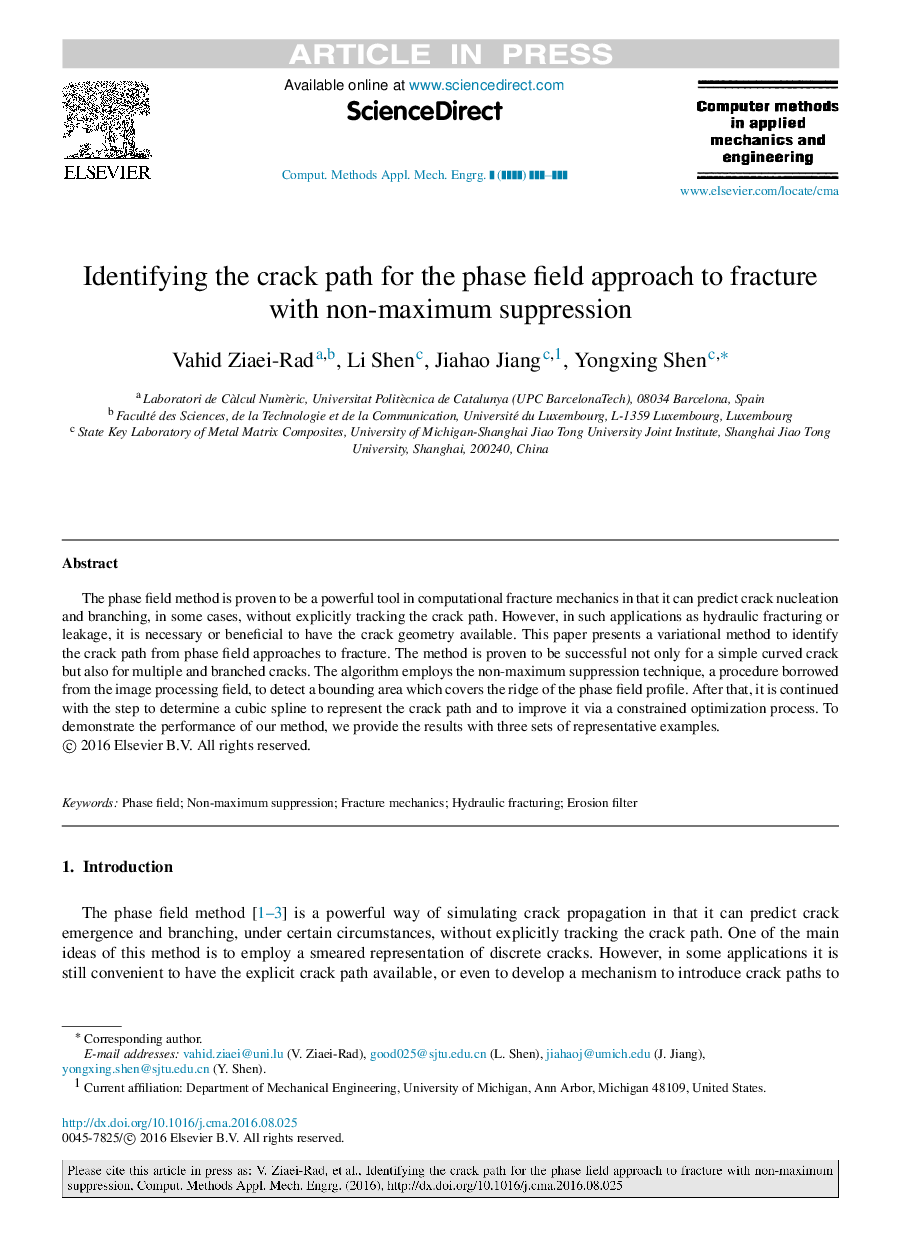| Article ID | Journal | Published Year | Pages | File Type |
|---|---|---|---|---|
| 4964039 | Computer Methods in Applied Mechanics and Engineering | 2016 | 18 Pages |
Abstract
The phase field method is proven to be a powerful tool in computational fracture mechanics in that it can predict crack nucleation and branching, in some cases, without explicitly tracking the crack path. However, in such applications as hydraulic fracturing or leakage, it is necessary or beneficial to have the crack geometry available. This paper presents a variational method to identify the crack path from phase field approaches to fracture. The method is proven to be successful not only for a simple curved crack but also for multiple and branched cracks. The algorithm employs the non-maximum suppression technique, a procedure borrowed from the image processing field, to detect a bounding area which covers the ridge of the phase field profile. After that, it is continued with the step to determine a cubic spline to represent the crack path and to improve it via a constrained optimization process. To demonstrate the performance of our method, we provide the results with three sets of representative examples.
Related Topics
Physical Sciences and Engineering
Computer Science
Computer Science Applications
Authors
Vahid Ziaei-Rad, Li Shen, Jiahao Jiang, Yongxing Shen,
